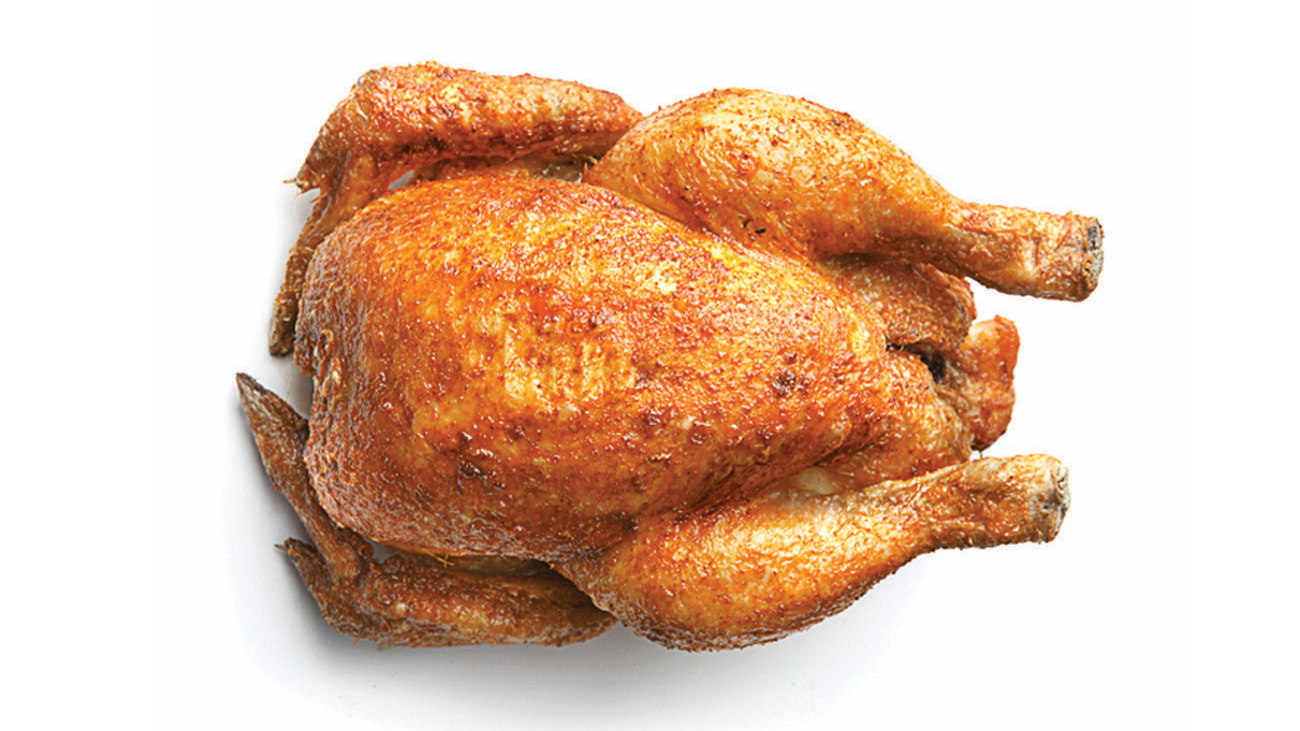
Even if you fear that your future meals will be nothing but late-night takeout eaten at your desk, trust me, you’ll be better served learning to cook a few things on your own. Not only will you eat better, you’ll actually be able to make something edible if you want to, say, host a dinner party. Now is the time to start adding a few key dishes to your culinary arsenal and hone those cooking skills.
So I’m going to tell you how to roast a chicken. Don’t freak out! It’s easier than it sounds. What’s more, a roast chicken is wonderfully comforting and incredibly versatile. A Swiss Army knife of meals, yielding (depending on the size of bird and your appetite): a hearty weeknight meal; a carcass to make a store of homemade chicken stock; and leftover meat to use in sandwiches, soups, casseroles or salads. A perfect roast chicken — juicy on the inside, golden-brown and crispy on the outside — needs very little adornment and just a little instruction on technique, cooking times and temperatures.
Crispy-skinned roast chicken
- 2½–3 lb chicken, innards removed and patted dry inside and out
- Kosher salt
- Fresh ground pepper
- 1 tbsp fresh thyme, rosemary, or a combination
- ½ lemon
- Butcher’s twine
- Roasting pan (with rack, if possible)
- Meat thermometer (optional, but helpful)
- Preheat oven to 450°F. Salt and pepper chicken cavity, then truss the bird (tie wings and legs together) and use lemon to seal opening.
- Salt outside of chicken, using about one tablespoon total, and place bird in roasting pan on top of a rack.
- Roast 50–60 minutes. Check to see if it’s done either with meat thermometer (looking for 165°F in the thickest part of thigh/leg meat), or by poking a knife into the joint between leg and carcass to see if juices run clear. Remove from oven, and place bird on cutting board.
- Add thyme/rosemary to pan juices while still hot. Baste chicken with juices. Allow chicken to rest at least 20 minutes — this will allow it to continue cooking, draw any juices back into the bird, and let it become cool enough to carve.
- Carve chicken. Or, you may just want to caveman that bird and rip it apart with your bare hands. Either way is perfectly good.
Web exclusive: For a built-in side dish…
Toss some potatoes (baby ones, or larger ones cut into 1-2 inch pieces), carrots, parsnips, Brussels sprouts, or any combination of these, with a bit of olive oil, salt and pepper, then scatter across bottom of roasting pan. If you go with this method, you could just stick a few sprigs of thyme or rosemary right into the cavity of the chicken or directly under the chicken and get some additional flavour that way, since you won’t have much in the way of basting juices at the end. Lay the trussed chicken directly on top or on a rack set over the vegetables. By the time the chicken is done, your veggies will be browned, roasted and basted in delicious, lemony, salty chicken fat. You’re welcome.

A bird in hand
When it comes to selecting a chicken, don’t wing it
Buy young
Go for 2.5–5 lb “roasters” — they yield more meat than smaller “broilers” or “fryers” and usually have a tad more fat, which equals tastier to eat. Avoid stewing birds: they’re old, tough and best
left for longer cooking times.
Buy fresh
Frozen sucks flavour-wise, plus you’ll have to defrost the thing. Look for a plump and meaty chicken with smooth, tight and soft skin. Yellowed, puckered or mottled skin is definitely a bad sign.
Buy natural
Chickens free of animal and hormone by-products taste better, but be careful: labels like “grain fed,” “free range” and “all natural” tend to mean little. Find a butcher you trust so you know where your meat comes from.

This story is from the 2013 edition of PrecedentJD Magazine
Photograph courtesy of iStockphoto
Illustration by Isabel Foo
